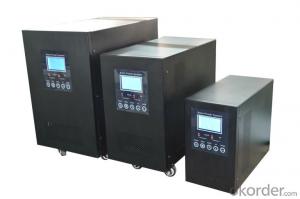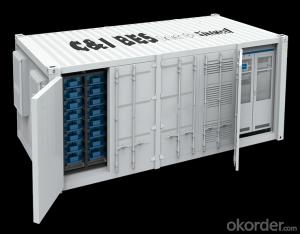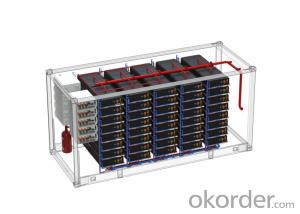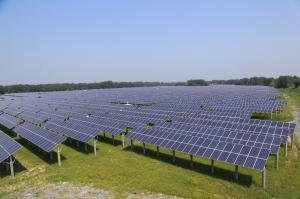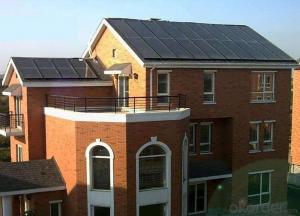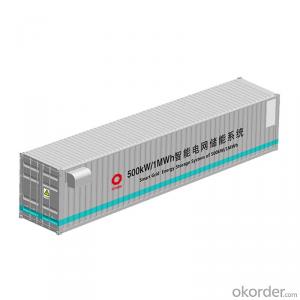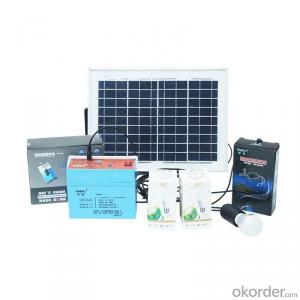Inverter Generator Solar
Inverter Generator Solar Related Searches
Ac Inverter For Solar Panels Solar Panel With Ac Inverter Gas Furnace With Ac Panda Hot Water Bottle Cover Minion Hot Water Bottle Cover Abb Solar Water Pump Inverter Solar Water Pump Philippines Extra Long Hot Water Bottle Solar Panel Dc To Ac Inverter Old Fashioned Hot Water BottleHot Searches
10 Kw Solar Inverter Price 10 Kva Solar Inverter Price 200 Watt Solar Inverter Price Solar Inverter Price Per Watt 500 Watt Solar Inverter Price Solar Inverter 500 Watt Price 1000 Watt Solar Inverter Price Solar Inverter 1000 Watt Price 800 Watt Solar Inverter Price 5000 Watt Solar Inverter Price 1600 Watt Solar Inverter Price Solar Inverter Best Company Solar Inverter Cover Stratco Solar Inverter Research Paper Solar Inverter Fire Risk Top Solar Inverter Companies Solar Edge Inverter Sizes Solar Inverter User Manual Tesla Solar Inverter Manual Solar Inverter Buy OnlineInverter Generator Solar Supplier & Manufacturer from China
Okorder.com is a professional Inverter Generator Solar supplier & manufacturer, offers integrated one-stop services including real-time quoting and online cargo tracking. We are funded by CNBM Group, a Fortune 500 enterprise and the largest Inverter Generator Solar firm in China.Hot Products
FAQ
- Solar energy plays a crucial role in achieving energy independence by providing a clean, renewable, and abundant source of power. It reduces our dependence on fossil fuels, mitigates climate change, and promotes sustainability. Solar power empowers individuals, communities, and even entire nations to generate their own electricity, reducing reliance on imported energy and creating a more resilient and self-sufficient energy system.
- Solar panel performance can be significantly affected by air pollution. One of the main ways in which it affects them is by diminishing the amount of sunlight that reaches the panels. Sunlight can be scattered and absorbed by air pollution, such as smog and particulate matter, resulting in a decrease in the solar energy absorbed by the panels. This, in turn, reduces the overall efficiency and power output of the panels. Furthermore, a layer of dust, dirt, and other pollutants can be deposited on the surface of solar panels due to air pollution. This layer obstructs and absorbs sunlight, further reducing the amount of energy that can be collected. Additionally, the accumulation of these pollutants acts as a barrier that hampers the transmission of sunlight to the solar cells, thus decreasing the panels' efficiency. Moreover, air pollution can cause the corrosion of solar panel surfaces. Pollutants like sulfur dioxide and nitrogen oxides can react with moisture in the air, forming acidic compounds. Over time, these compounds gradually deteriorate the protective coatings on the panels and damage the cells, leading to a reduction in performance and lifespan. Overall, the impact of air pollution on solar panels is significant. It diminishes the amount of harvested sunlight, lowers the efficiency and power output of the panels, and can cause damage and deterioration over time. Therefore, it is crucial to consider the effects of air pollution during the design and installation of solar panels to ensure optimal performance and longevity.
- Absolutely, agricultural drying or processing operations can definitely utilize solar energy systems. Solar energy is an eco-friendly and renewable power source that can be harnessed and applied to fulfill the energy requirements of various agricultural activities. Drying crops, grains, fruits, vegetables, and other agricultural produce can be accomplished using solar drying systems. These systems utilize solar radiation to generate heat, which is then employed to dry the agricultural products. Solar dryers are not only cost-effective and energy-efficient, but they also have lower operational expenses compared to traditional drying methods. They prove to be particularly advantageous in areas with ample sunlight but limited access to electricity. Solar energy can also power various processing operations in agriculture. Machinery like solar-powered mills, crushers, pumps, and others can be utilized for tasks such as grain milling, fruit crushing, or water irrigation. By relying on solar energy, farmers can diminish their reliance on fossil fuels and grid electricity, resulting in cost savings and a more sustainable farming approach. Moreover, solar energy systems can be combined with energy storage solutions, such as batteries, to guarantee a continuous power supply even during periods of low sunlight or at night. This facilitates farmers to have reliable access to energy for their drying or processing operations all day long. In conclusion, solar energy systems present a feasible and environmentally conscious solution for powering agricultural drying or processing operations. They contribute to the reduction of greenhouse gas emissions, decrease dependency on fossil fuels, and promote sustainable farming practices.
- Solar energy systems play a crucial role in promoting energy independence by providing a reliable and renewable source of power. By harnessing the sun's energy, these systems reduce our dependence on fossil fuels and foreign energy sources. They allow individuals, communities, and even entire countries to generate their own electricity, reducing the need for traditional power grids and increasing self-sufficiency. Solar energy systems empower individuals to take control of their energy consumption and contribute to a more sustainable and independent future.
- Medical facilities or clinics can utilize solar energy systems to power their operations. Solar energy, obtained through solar panels, is a sustainable and renewable power source. Sunlight is converted into electricity by these panels, which can then be used to operate various electrical appliances and equipment in medical facilities. The utilization of solar energy systems in medical facilities offers numerous benefits. Firstly, it reduces dependence on traditional grid electricity, which may be unreliable or inaccessible in certain areas. Solar energy systems provide a consistent and independent power source, ensuring uninterrupted functioning of medical facilities, even during power outages or in remote locations. Secondly, solar energy systems are environmentally friendly. Medical facilities typically contribute to significant greenhouse gas emissions due to their reliance on fossil fuels for electricity generation. By transitioning to solar energy, medical facilities can considerably decrease their carbon footprint and contribute to a cleaner and healthier environment. Additionally, solar energy systems can help lower operational costs for medical facilities. Although the initial installation cost of solar panels may be higher, they have a long lifespan and require minimal maintenance. Over time, the electricity generated by solar panels can offset or even eliminate the need to purchase electricity from the grid, resulting in substantial cost savings. Furthermore, solar energy systems can be combined with energy storage solutions, such as batteries, to ensure a continuous and reliable power supply. This is particularly crucial for medical facilities that require uninterrupted power for critical equipment and life-saving procedures. In conclusion, solar energy systems offer a feasible and sustainable solution for powering medical facilities or clinics. They provide an independent and consistent power source, contribute to a cleaner environment, and can help reduce operational expenses. By harnessing solar energy, medical facilities can enhance their resilience, sustainability, and ability to provide high-quality healthcare services.
- Yes, solar energy systems can definitely be used for powering greenhouses. Solar panels can be installed on the roof or walls of a greenhouse to capture sunlight and convert it into electricity. This renewable energy can then be used to power various systems within the greenhouse, such as ventilation, heating, cooling, and lighting. Solar energy offers several advantages for powering greenhouses. Firstly, it is a clean and sustainable source of energy, which helps reduce greenhouse gas emissions and environmental impact. Secondly, solar power is reliable and abundant, especially in regions with ample sunlight. This means that greenhouses can have a consistent and uninterrupted power supply, even in remote or off-grid locations. Additionally, solar energy systems can help reduce operating costs for greenhouse owners. Once the initial investment in solar panels and equipment is made, the ongoing energy costs are significantly lower compared to traditional fossil fuel-based systems. This can lead to substantial long-term savings, especially for larger-scale commercial greenhouses. Moreover, solar energy systems can be integrated with energy storage solutions, such as batteries, to store excess energy generated during the day. This stored energy can then be used during cloudy periods or at night, ensuring a continuous power supply for the greenhouse. Overall, solar energy systems are a viable and sustainable option for powering greenhouses. They offer numerous benefits, including reduced environmental impact, reliable energy supply, cost savings, and the ability to integrate with energy storage solutions.
- Solar energy systems can have a positive impact on energy security by diversifying our energy sources and reducing our dependence on fossil fuels. By harnessing the power of the sun, solar energy systems provide a renewable and abundant source of clean energy, which decreases our reliance on imported energy and helps to stabilize energy prices. Additionally, solar energy systems are decentralized and can be installed at various locations, making them less vulnerable to disruptions in the energy supply chain. Overall, the widespread adoption of solar energy systems contributes to a more secure and sustainable energy future.
- The location of a solar energy system has a significant impact on its performance. Various factors such as latitude, climate, shading, and orientation play a crucial role in determining the efficiency and effectiveness of a solar energy system. Firstly, the latitude of the location affects the amount of solar radiation received. Areas closer to the equator receive more direct sunlight throughout the year, resulting in higher solar energy production. Conversely, regions located further away from the equator receive less direct sunlight and may experience lower solar energy generation. Climate also influences the performance of a solar energy system. Regions with clear skies and ample sunshine tend to have higher solar energy potential compared to areas with frequent cloud cover or a higher number of rainy days. Additionally, extreme temperatures can also impact the efficiency of solar panels, as excessive heat can reduce their output efficiency. Shading is another crucial factor to consider when installing a solar energy system. Shadows from nearby buildings, trees, or other obstructions can significantly decrease the amount of sunlight reaching the solar panels. Even partial shading on a small portion of the panels can disproportionately impact the overall system's performance, resulting in reduced energy production. The orientation of the solar panels also affects system performance. The ideal orientation for solar panels is typically facing south in the Northern Hemisphere and north in the Southern Hemisphere. This allows panels to receive the maximum amount of sunlight throughout the day. However, deviations from the optimal orientation can still be efficient, albeit with slightly reduced performance. In conclusion, the location of a solar energy system has a direct impact on its performance. Factors such as latitude, climate, shading, and orientation all influence the efficiency and effectiveness of solar energy production. Considering these factors during the planning and installation process is crucial to maximizing the potential of solar energy systems.





